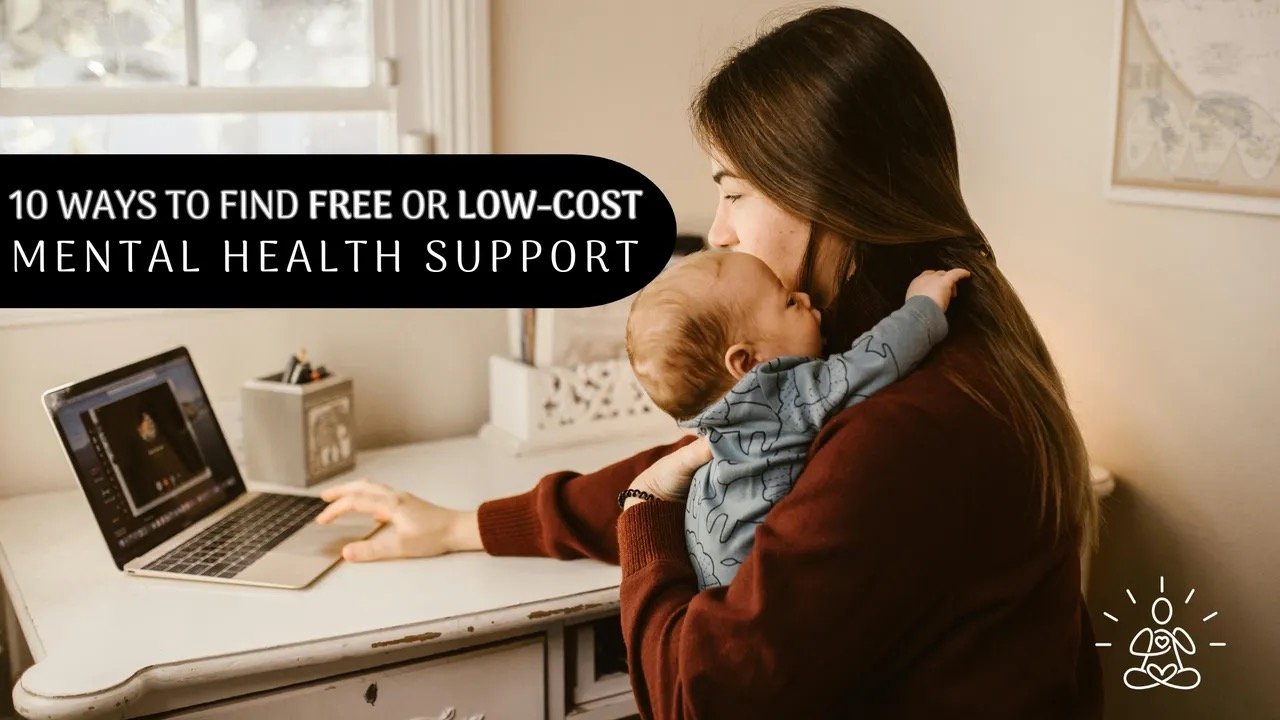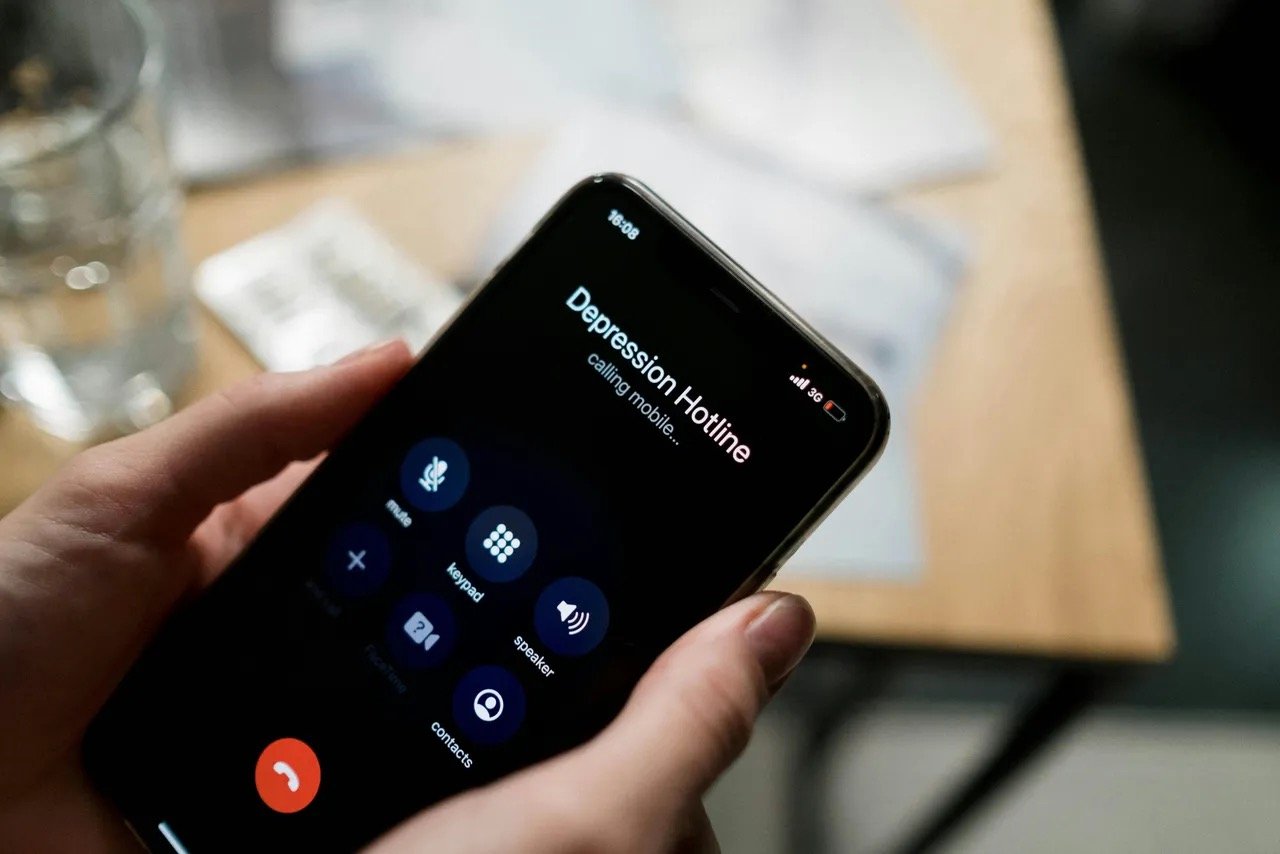10 Ways to Find Free or Low-Cost Mental Health Support
In an age where mental health awareness is at an all-time high, finding support is more accessible than ever, especially with the growth of online therapy platforms. However, navigating mental health care can still feel overwhelming, particularly when finances are a concern. Fortunately, many resources can help make therapy more accessible—some even at no cost. From professional counseling to community-based support and practical tools, there is a variety of options to help you prioritize your mental well-being without breaking the bank.
Keep reading if you’d like to explore options for accessing low-cost or free mental health support.
1. Employee Assistance Programs (EAPs): A Hidden Gem
Did you know that nearly 80% of employers offer free therapy through Employee Assistance Programs (EAPs) in the United States? What’s surprising is how few people are aware of this benefit. EAP's are most common among larger employers and often extend not only to employees but also to their family members—and sometimes even friends! If your employer doesn’t offer this benefit, check with family members or friends who might have access to an EAP, as their programs may extend to you.
EAP's typically provide short-term counseling (what I have personally seen in my practice ranges from 3–12 sessions) that can be accessed confidentially. As of this writing, I currently work with several EAP's, including Confide Enhanced EAP, Optum Live & Work Well EAP, and Resources for Living EAP. I’m also always looking for ways to increase access to care, so I may be partnering with additional EAP's in the future. If you're interested, feel free to reach out for the latest information.
To see if your employer offers an EAP, check with your HR department.
2. University or School Counseling Services
For students juggling academic and social stressors, school counseling services can be a lifeline. If you’re a student, your school may provide free or low-cost mental health services. Many institutions partner with platforms like TimelyCare, a service designed for students to access virtual therapy.
I am currently on the TimelyCare platform with limited availability, so if you’re a student looking for support, this could be a great place to start. What I have seen on TimelyCare is that schools typically cover somewhere between 5-12 sessions per school year, at no cost to the student. These sessions can help meet or supplement mental health needs.
Reach out to your school’s counseling center or student services office to learn about resources available to you.
3. Clinical Trials and Research Studies
Research studies often provide free therapy as part of their trials to test new treatment methods. This can be a win-win—you’ll access therapy while helping advance mental health research.
You can find available studies through platforms like ClinicalTrials.gov or by searching for local university-led research projects.
4. Programs and Helplines That Connect You to Therapy
Various programs and organizations specialize in connecting individuals to therapists, often covering some or all costs. These services cater to different populations and needs.
For example, one organization that has reached out to me directly in the past is Centerstone Military Services, a nonprofit that helps pay for and locate counseling services for service members, veterans, and their family members. Another one is AWS Health, which works with individuals who might be experiencing anxiety, trauma, or PTSD following an injury or accident.
A vital resource for the military community is Military OneSource. They provide free, confidential counseling and support to service members, veterans, and their immediate family members. Counseling sessions are available both in-person and virtually to address various life and relationship challenges.
Don’t worry if these examples don’t match your situation; many resources can reduce barriers to care. Here are three trusted helplines that can guide you to free or low-cost counseling services:
National Alliance on Mental Illness (NAMI) Helpline: Call 1-800-950-NAMI (1-800-950-6264).
Substance Abuse and Mental Health Services Administration (SAMHSA) National Helpline: Call 1-800-662-HELP (1-800-662-4357).
United Way Helpline: Dial 211.
5. Crisis Hotlines and Immediate Support
If you’re in distress, free and confidential hotlines can provide immediate support. While these resources are not substitutes for ongoing therapy, they can offer critical help when you need it most. Here are some options:
Crisis Text Line: Text HOME to 741741 for 24/7 support from trained volunteers.
National Suicide Prevention Lifeline: Call 988 for free, confidential crisis support in the U.S.
The Trevor Project: Call 1-866-488-7386, text START to 678-678, or visit their website for LGBTQ+ youth support.
6. Support Groups
Support groups are a fantastic way to connect with others who understand your experiences, offering both encouragement and practical advice. Many are free or low-cost, making them an accessible option for mental health support. Depending on your needs, you might consider:
Alcoholics Anonymous (AA) or Al-Anon: Support for individuals struggling with alcohol addiction or their loved ones.
Co-Dependents Anonymous (CoDA): A group focused on fostering healthy relationships and overcoming codependency.
Mental Health America (MHA) Groups: Offers support for a wide range of mental health conditions, both online and in-person.
Anxiety and Depression Association of America (ADAA) Groups: Provides support for individuals managing anxiety, depression, and related conditions.
You can find local or virtual groups that fit your needs by visiting FindSupportGroups.org or checking the MHA or ADAA websites. Whether you’re seeking emotional support, shared experiences, or practical tips, support groups can be a valuable part of your overall well-being and healing process.
7. Free Self-Help Apps and Platforms
Although not a replacement for therapy, self-help apps can complement your mental health journey by offering valuable tools to manage stress and anxiety. Some apps include extensive free features or extended trial periods. Here are some of my favorite:
Insight Timer: Free guided meditations, mindfulness exercises, and courses to reduce stress and anxiety.
CBT Thought Diary: Tracks and challenges negative thoughts using cognitive-behavioral techniques.
Sanvello: Provides mood tracking, guided meditations, and coping tools, with many features available for free.
For help choosing effective, science-based mental health apps, visit onemindpsyberguide.org. This non-profit organization provides professional and unbiased review of mental health apps.
8. Open Path Psychotherapy Collective
Open Path Psychotherapy Collective is an amazing resource for those seeking affordable therapy. Created by therapists who saw an unmet need in their communities, Open Path connects individuals who can’t afford full therapy rates with providers offering sliding scale fees. Their mission is simple: to make mental health care accessible to everyone.
The process is easy—you answer a few basic questions about your financial situation (no proof of income required) and pay a one-time $65 lifetime membership fee. Once you’re a member, you’ll have access to therapists offering significantly reduced rates. Licensed therapists charge between $40–$70 per session, while student interns provide care starting as low as $30. Many of these therapists are experienced professionals working in private practice, so you can trust that the care you receive will be high quality.
If you’re looking for a middle ground between private pay and completely free services, Open Path is a fantastic option. Visit their website to explore their therapist directory and get started—it’s quick, simple, and a great way to prioritize your mental health without breaking the bank.
9. Sliding Scale Fees & Payment Plans
Not all therapists who offer sliding scale fees are part of Open Path. Some may not know about the resource, while others prefer to manage their sliding scale slots independently. Occasionally, therapists might offer other forms of financial assistance, like payment plans or waiving copays, though these options are less common. The takeaway? Don’t assume—just ask if they provide any kind of financial assistance. You never know unless you bring it up.
If finances are a concern, having an honest conversation about your budget might open up some possibilities. While not every therapist will be able to accommodate your financial situation, it’s okay to explore. If they can’t offer the flexibility you need, they might be able to recommend someone who can.
10. Leverage Tax-Free Dollars
If you have access to a Flexible Spending Account (FSA) or a Health Savings Account (HSA) through your employer or health plan, these can be a game-changer for making therapy more affordable. Both accounts allow you to pay for eligible medical expenses, including therapy, with pre-tax dollars. This reduces your out-of-pocket costs by using money that’s already set aside.
FSAs are typically “use-it-or-lose-it” accounts, meaning funds must be spent by the end of the calendar year or during a designated grace period. If you have unused funds, therapy could be the perfect way to use them before they expire. It’s a smart way to prioritize your mental health while making the most of your financial resources.
Final Thoughts
From employer-sponsored programs to community organizations and self-help tools, many options exist to make mental health care more accessible. Whether you need immediate crisis support or ongoing therapy, help is available.
Remember, even if fully free therapy isn’t available, many resources exist to ease the financial load of accessing the care you need. Prioritizing your mental health doesn’t have to come with a hefty price tag.
You’re not alone—support is just a call or click away. Don’t let cost be the barrier that keeps you from getting the help you deserve—there’s always a path forward, and you are worth the effort it takes to find it.
by Maria Perdomo-Torres, LCSW-S, MHA, CFSW




